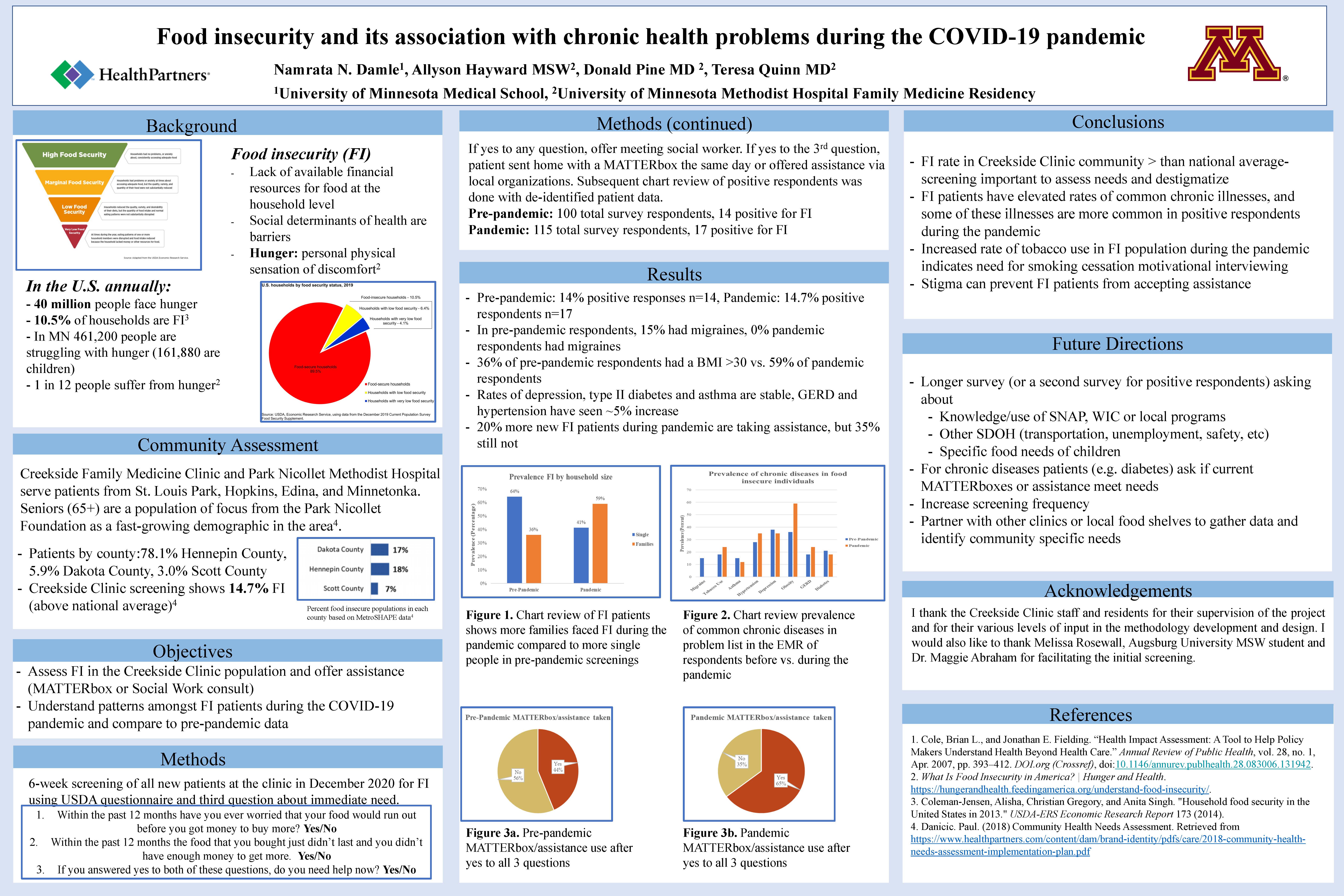|
Food insecurity and its association with chronic health problems during the COVID 19 pandemic
Namrata Damle, University of Minnesota, Minneapolis, MN
[email protected]
Allyson Hayward MSW, Creekside Family Medicine Residency
[email protected]
Donald Pine MD, Creekside Family Medicine Residency
[email protected]
Teresa Quinn MD
Creekside Family Medicine Residency
[email protected]

Objectives:
• Determine how rates of FI have changed during pandemic as compared to before the pandemic
• Identify any particular demographics of patients with increased food insecurity
Methods:
Chart review of positive respondents done with de-identified patient data using problem list in EPIC-> determine changes based.
Pre-pandemic (June & December 2019): 100 total survey respondents, 14 positives for FI.
Pandemic (December 2020): 115 total survey respondents, 17 positives for FI" "Pre-pandemic: 14% positive responses n=14.
Results:
• Pandemic: 14.7% positive respondents n=17
• 36% of pre-pandemic respondents had a BMI >30, 59% of pandemic respondents had BMI>30
• Rates of depression, type II diabetes and asthma are stable
• GERD and hypertension have seen ~5% increase
• 20% more new FI patients during pandemic are taking assistance, but 35% still not doing so
Conclusions:
FI rate in Creekside Clinic community > than the national average- screening important to assess needs and destigmatize.
FI patients have elevated rates of common chronic illnesses, and some of these illnesses are more common in positive respondents during the pandemic.
Increased rate of tobacco use in FI population during the pandemic indicates the need for smoking cessation motivational interviewing.
While more people are accepting FI assistance, stigma can prevent FI patients from accepting assistance.
|





